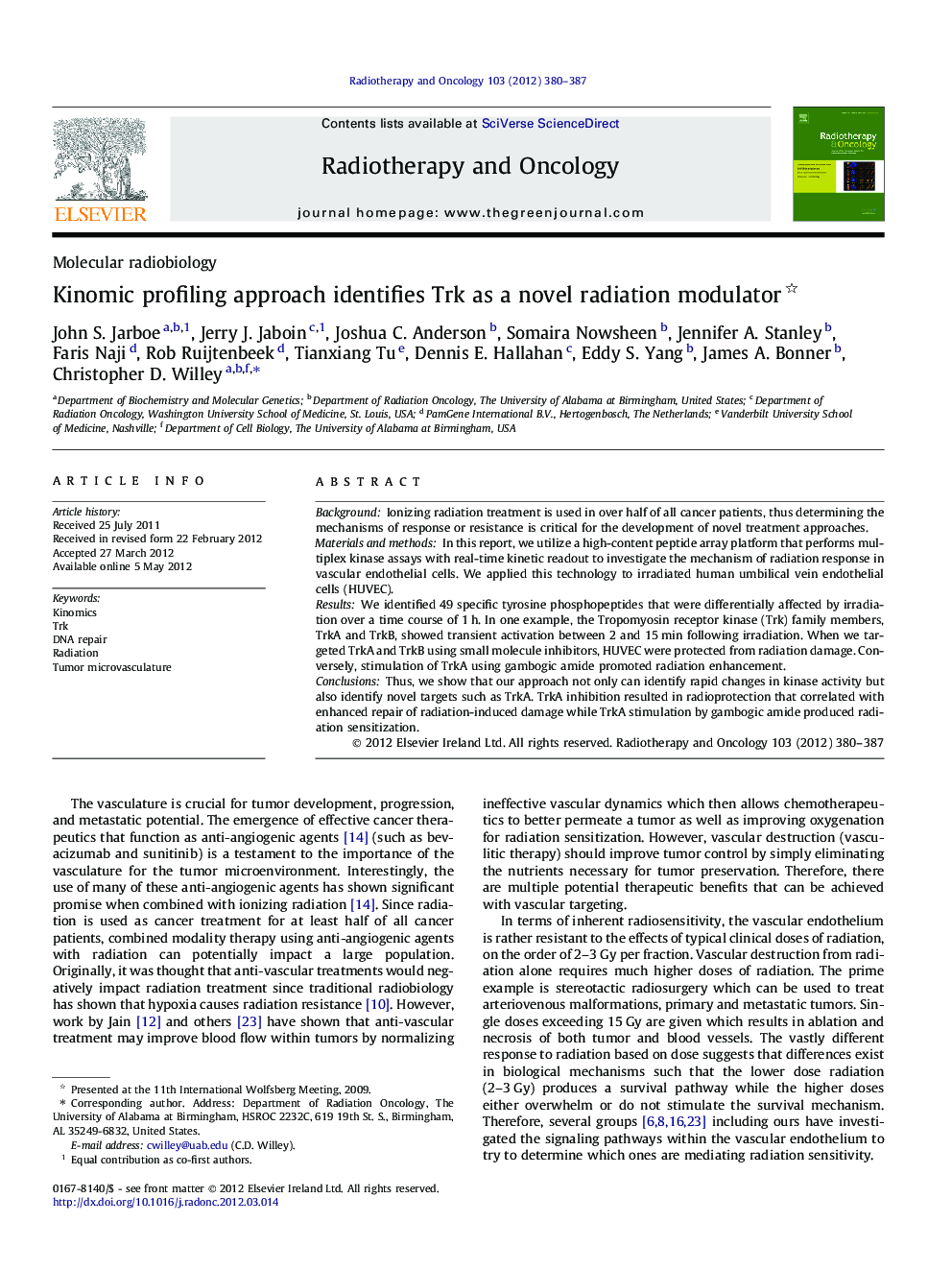| Article ID | Journal | Published Year | Pages | File Type |
|---|---|---|---|---|
| 2158229 | Radiotherapy and Oncology | 2012 | 8 Pages |
BackgroundIonizing radiation treatment is used in over half of all cancer patients, thus determining the mechanisms of response or resistance is critical for the development of novel treatment approaches.Materials and methodsIn this report, we utilize a high-content peptide array platform that performs multiplex kinase assays with real-time kinetic readout to investigate the mechanism of radiation response in vascular endothelial cells. We applied this technology to irradiated human umbilical vein endothelial cells (HUVEC).ResultsWe identified 49 specific tyrosine phosphopeptides that were differentially affected by irradiation over a time course of 1 h. In one example, the Tropomyosin receptor kinase (Trk) family members, TrkA and TrkB, showed transient activation between 2 and 15 min following irradiation. When we targeted TrkA and TrkB using small molecule inhibitors, HUVEC were protected from radiation damage. Conversely, stimulation of TrkA using gambogic amide promoted radiation enhancement.ConclusionsThus, we show that our approach not only can identify rapid changes in kinase activity but also identify novel targets such as TrkA. TrkA inhibition resulted in radioprotection that correlated with enhanced repair of radiation-induced damage while TrkA stimulation by gambogic amide produced radiation sensitization.
